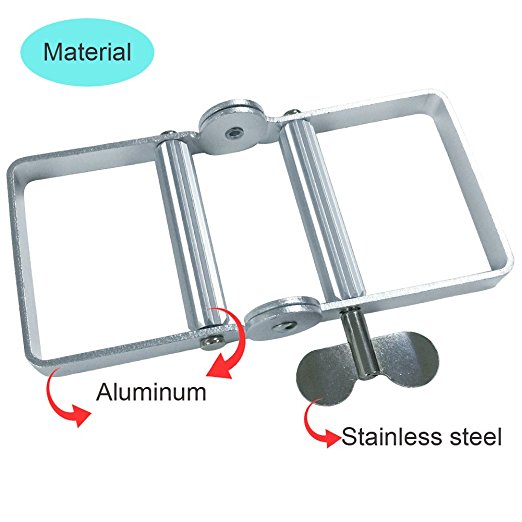

PAINT TUBE SQUEEZER FULL
With the full rainbow of colors from tubes on their palettes, the Impressionists could record a fleeting moment in its entirety.

But Rand’s tin tubes enabled the Impressionists to take full advantage of dazzling new pigments-such as chrome yellow and emerald green-that had been invented by industrial chemists in the 19th century. Since oil paints were time-consuming to produce and quick to dry out, artists prepared only a few colors to work with during a painting session and would fill in just one area of a canvas at a time (such as a blue sky or red dress). Paint pigments had remained nearly unchanged since the Renaissance. Rand’s tubes carried inside them another crucial element as well: new colors. (Sand from the beach can be found embedded in the paint.) Waves at the Manneporte appears to have been created on the spot in two or three sessions. On one occasion, he and his easel were nearly swept off the beach into the sea. For his 1885 canvas Waves at the Manneporte (pictured at left)-bursting with red, blue, violet, yellow and green-Claude Monet had to walk along several beaches and through a long dark tunnel in a cliff side to reach the Manneporte, an extraordinary rock outcrop on the rough northern coast of France. For the first time in history, it was practical to produce a finished oil painting on-site, whether in a garden, a café or in the countryside (although art critics would long argue if Impressionist paintings were truly “finished”).
PAINT TUBE SQUEEZER PORTABLE
The eminently portable paint tube was slow to be accepted by many French artists (it added considerably to the price of paint), but when it caught on it was exactly what the Impressionists needed to abet their escape from the confines of the studio, to take their inspiration directly from the world around them and commit it to canvas, particularly the effect of natural light.

Made from tin and sealed with a screw cap, Rand’s collapsible tube gave paint a long shelf life, didn’t leak and could be repeatedly opened and closed. Rand’s brush with greatness came in the form of a revolutionary invention: the paint tube. And bladders didn’t travel well, frequently bursting open. But there was no way to completely plug the hole afterward. At the time, the best paint storage was a pig’s bladder sealed with string an artist would prick the bladder with a tack to get at the paint.

Like many artists, Rand, a Charleston native living in London in 1841, struggled to keep his oil paints from drying out before he could use them. Yet the breakthroughs of Monet, Pissarro, Renoir and others would not have been possible if it hadn’t been for an ingenious but little-known American portrait painter, John G. The French Impressionists disdained laborious academic sketches and tastefully muted paintings in favor of stunning colors and textures that conveyed the immediacy of life pulsating around them.


 0 kommentar(er)
0 kommentar(er)
